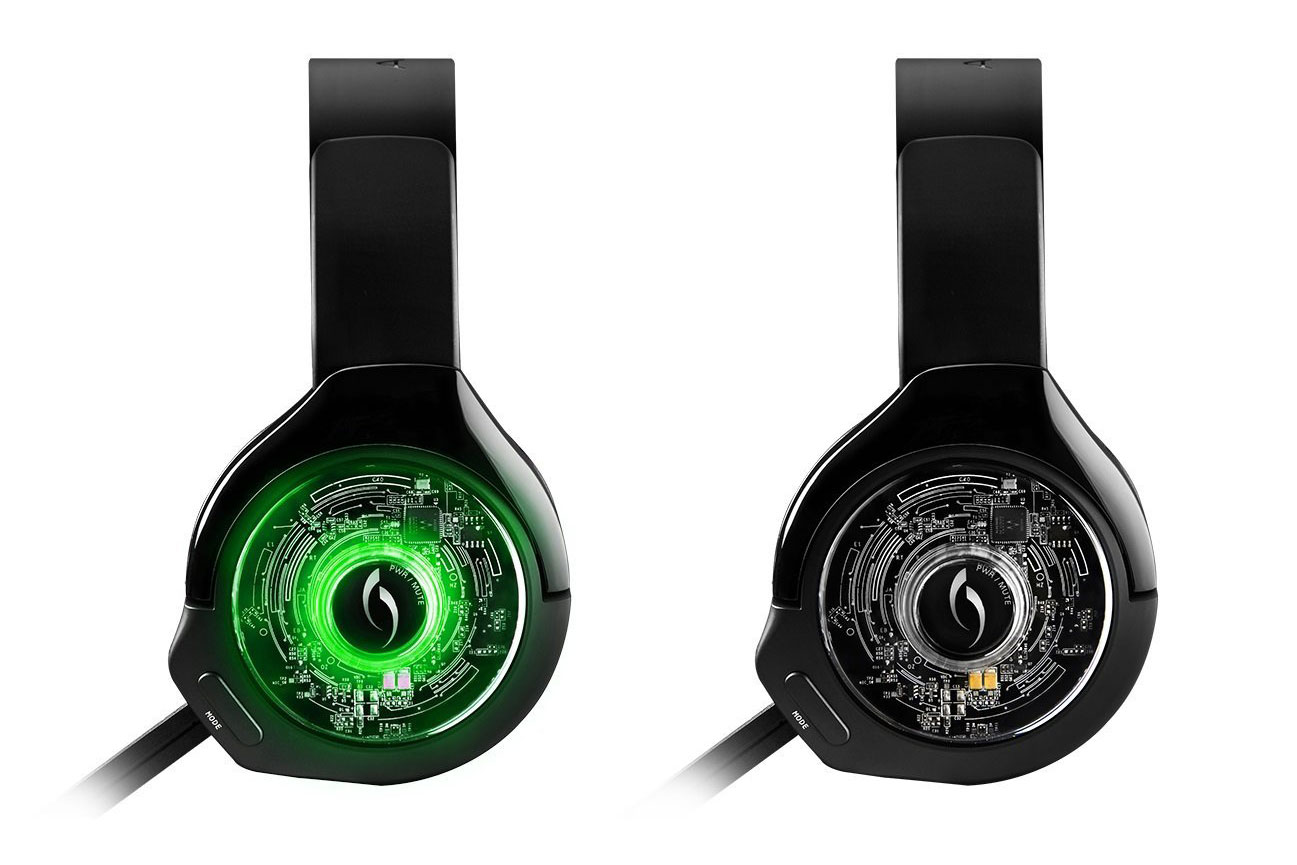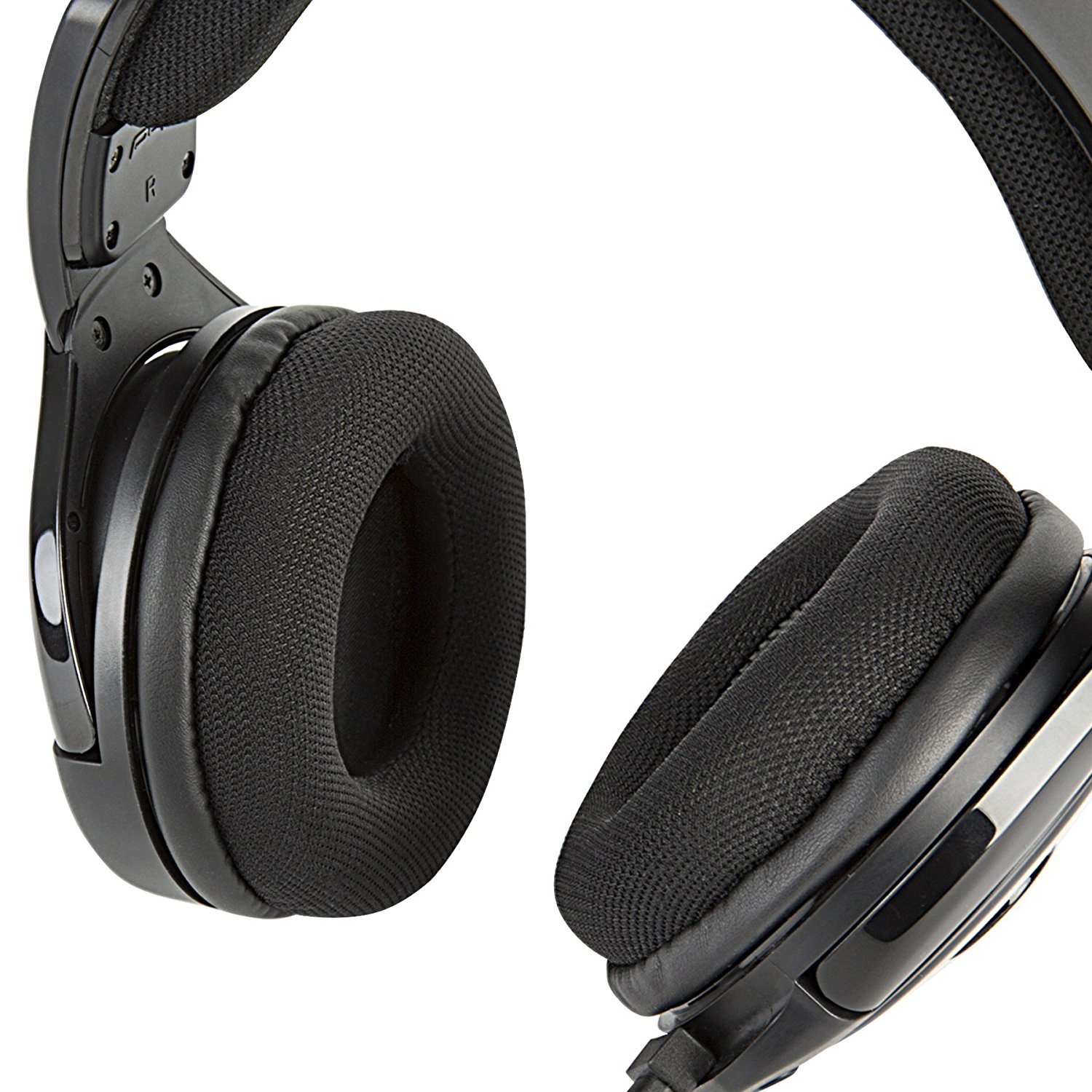Review: PDP Afterglow AG9+ gaming headset
 A brief review of my latest but not unexpected disappointment. Consider it a warning I felt the need to pass along and increase the signal for. (The original/full review is also in my own column at pcgameexaminer.com.)
A brief review of my latest but not unexpected disappointment. Consider it a warning I felt the need to pass along and increase the signal for. (The original/full review is also in my own column at pcgameexaminer.com.)
Don’t let the glow of the PDP Afterglow AG9+ distract you. Shiny though it may be, the AG9+ is a mediocre multi-platform headset best avoided by strict PC gamers and left to the console playing tweens at which it’s likely aimed.
I confess that I’ve long suspected PDP was a company built on cheap flash, i.e. the costume jewelry of gaming peripherals. I’ve visited their show booths at E3 and PAX in the past, and found their wares to be largely cheap, shiny stuff aimed at less discerning (and probably younger) console-focused gamers. But I finally decided to finally give them a fair shake and review some of their accessories first hand, starting with the Rock Candy wireless keyboard, and then moving to the Afterglow AG9+ wireless headset.
AG9+ feature highlights and specifications
There is relatively little to differentiate the AG9+ from other headsets. Lighted ear cups are nothing new. But the AG9+ does have a feature PDP doesn’t even mention on the box: voice preview (i.e. you can hear your own voice through the microphone). This is a feature relatively few gaming headsets have, but PDP seems more interested in highlighting the lighted ear cups. On a side note, there also doesn’t appear to be any way to turn voice preview off.
Other general specifications are as follows:
- Officially licensed by Microsoft for the Xbox One
- Wireless chat
- Flexible and removable boom microphone with noise and echo canceling technology
- Voice preview
- Cloth memory foam covered headband and ear cups
- 50 mm drivers with two distinct audio modes: Pure Audio and Bass Boost
AG9+ comfort and design
Despite its cloth-covered memory foam ear cups and head band, the Afterglow AG9+ has a rather unrefined fit. The ear cups don’t rotate or swivel in the slightest. It’s not terrible, but it’s definitely not particularly comfortable.
The detachable microphone is stiff but bends with some effort. Based on my own testing you’ll want it placed pretty close to your mouth for best results.
The AG9+ has reasonably well-designed smart ear-cup controls; the power/mic mute button is a large button on the outside of the left ear cup, and a small pair of twin wheels on the underside of the left ear cup adjust Chat and Game Volume, although they are nigh impossible to differentiate. The Game volume chat has a slight ridge that the Chat volume roller lacks, but it’s too subtle to tell by touch which is which.

Afterglow AG9+ Audio performance
The Afterglow AG9+ delivers adequate stereo audio with decent bass. I didn’t find a lot to complain about listening to music or playing games of Overwatch and Smite, but there’s nothing to truly crow about either. Because it’s not a PC dedicated (or focused) headset, no additional software drivers — or their associated features, like an equalizer or other customization options — are available either.
Granted, I may have been already so put off by the poor fit, documentation, and generally shoddy ‘out of box’ experience that I didn’t care about the audio performance. Even if it had been as good as some of the better headsets I’ve played with (such as the wireless LucidSound LS30), I still wouldn’t recommend the AG9+.
The simple fact is that there is nothing compelling about the Afterglow AG9+ for PC gamers, and I’d scarcely recommend them to console gamers either in lieu of something from SteelSeries, Razer, LucidSound, Creative Labs, Roccat…and the list goes on.
Overall: Not recommended
The Afterglow AG9+ has decent general design, but it’s otherwise uncomfortable, cheaply made, and all flash over substance. It’s a scattershot approach to every gaming market that hopes luminescent, glowing earcups will distract you from its mediocrity. At around $80-$100, you can do better in this price range.